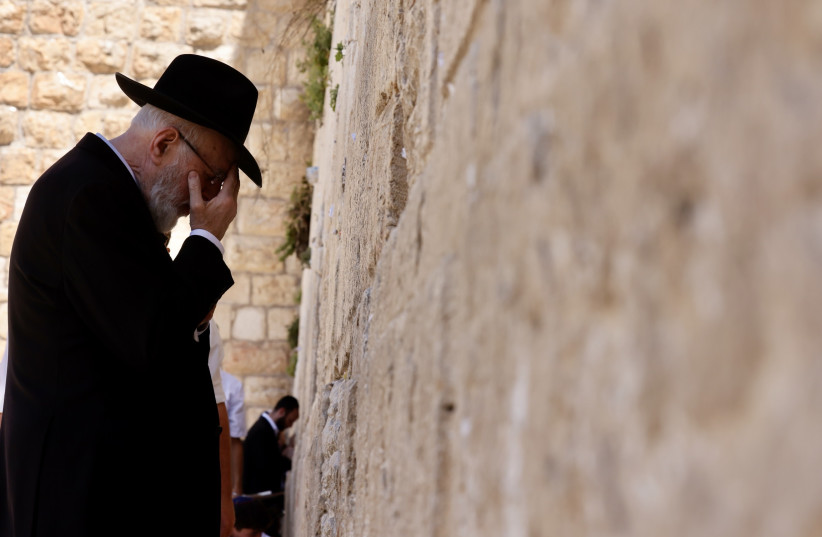In a recent podcast about my organization Ematai’s end-of-life care principles, I argued that Judaism takes into account “quality of life” when thinking about interventions toward the end of life.
Judaism certainly places a premium on preserving life and usually calls upon us to do everything to save a life. We value the life of all human beings and certainly do not belittle the inherent dignity of those with physical or mental impairments. We furthermore condemn active euthanasia, assisted suicide or intentionally hastening someone’s death. Judaism does not want humans to “put out a flickering candle,” as the Sages put it.
Nonetheless, as Kohelet proclaims, “There is a time for death” (Ecclesiastes 3:2). Sometimes our interventions will not extend living but instead prolong dying. Judaism doesn’t value dragging out a painful process of dying. Halacha allows a person to forego further interventions when their ailments have become too great and their quality of life has become too degraded.
Afterward, I was questioned whether “quality of life” is a Jewish value. Yes, we try to alleviate pain and suffering. But doesn’t Judaism assert that “every moment of life is of infinite value” and therefore should be extended as much as possible?
What does Judaism say about quality of life?
A few scholars have taken this approach. Jewish law mandates that we can desecrate Shabbat to save the life of a person, even if we will only be extending their life for a short, fleeting amount of time. On this basis, Rabbi Eliezer Waldenberg asserted that even as we treat people for pain, we should generally do everything to extend a person’s life, even for a limited time (chayei sha’ah). Similarly, Rabbi Immanuel Jakobovits repeatedly asserted, “Any fraction of life, whether 10 years or a minute, whether healthy, crippled or even unconscious, remains equally infinite in value.”

In contrast, Rabbi Yaakov Kanievsky (the “Steipler Gaon”), followed by Rabbi Asher Weiss, have contended that this sentiment is wrong. Their proof is that Halacha permits removing an impediment to a suffering person’s death, if this will prevent severe suffering, as long as one does not move the dying person himself in a way that will cause them to die. Sometimes, we should passively allow natural death.
One can buttress this claim by citing the following three trends in Talmudic literature that point to the value of “quality of life.”
Firstly, the Sages prayed for “mercy” for the terminally ill. The Talmud records a remarkable story of Rabbi Akiva visiting a sick student and afterward declaring, “Those who do not visit the sick kill a person because they don’t know whether to pray for mercy for them to live or to die.” The 14th-century commentator Rabbeinu Nissim asserted that sometimes when a person is suffering and dying, we should pray for them to die. This position was affirmed by Rabbi Yechiel M. Epstein. Indeed, we find prayers composed precisely to pray for someone’s death. Admittedly, some argued that this went far, but many detractors still argue that for the terminally ill, we simply pray for God to “have mercy.” He’ll decide what that means.
Secondly, various stories acknowledge that sometimes living is worse than death. Rabbeinu Nissim strengthened his argument by citing a well-known story regarding the last days of Rabbi Yehuda Ha-Nasi’s life. The handmaiden of Rabbi Yehuda Ha-Nasi prayed for her ill master to decease because she saw his suffering. Her requests were ultimately answered over the fervent entreaties of his students. Rabbi Moshe Feinstein derived from this story that when a person is both terminally ill and in intractable pain, the preferred recourse is to withhold life-prolonging measures and remove any external impediments to death. Decisors disagree on what are licit forms of “withholding” and what constitutes an “external impediment” that might be removed. Yet many agree that pharmacological and technological means should only be used, now, to maximize comfort.
Thirdly, beyond physical suffering, the Sages expressed concern for psychological and emotional pain. Two great sages, Choni the Circle-Drawer and R. Yohanan, were in deep emotional distress over their loss of companionship. In both cases, prayers were recited for their deaths and their souls were returned to their makers. In another case, an old woman complained to Rabbi Yosi ben Halafta that she had “become too old” and lost all sense of physical taste and emotional meaning. He advised her to refrain from going to synagogue services for three days, which was a great merit for her. She followed his orders and subsequently died.
Similarly, the Talmud explains that the Angel of Death could not enter the city of Luz. When elderly people felt that life had lost all purpose, they left the city and died. From this latter story, Rabbi Hershel Schachter asserts that people have the option to withhold interventions that are deemed non-beneficial on condition that it is within the spectrum of reasonable decisions taken by rational people (and not some quirky request or suicidal impulse).
The larger point was well-summed up by Rabbi Moshe Tendler and Dr. Fred Rosner, who wrote that, “Judaism is concerned about the quality of life, about the mitigation of pain, and the cure of illness wherever possible. If no cure or remission can be achieved, nature may be allowed to take its course. To prolong life is a mitzvah, to prolong dying is not.”
May God give us the wisdom to judiciously implement these teachings. ■
The writer is the executive director of Ematai, dedicated to helping Jews navigate their healthcare journey with Jewish wisdom. www.ematai.org
